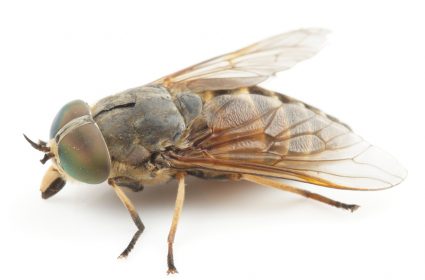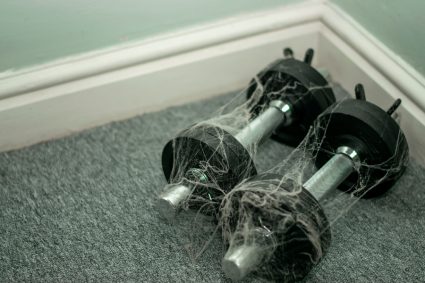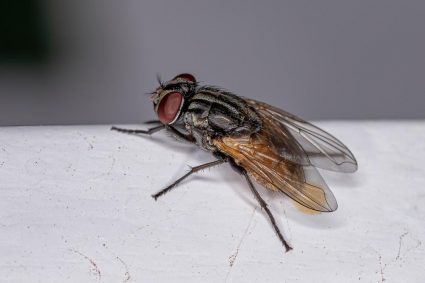
Mice infestations are a common problem in many households, and they can be particularly challenging when these pesky rodents take up residence in your walls. While it may seem like an impossible task to eliminate them, professional exterminators have a variety of effective methods to remove these unwanted guests. In this comprehensive guide, we will explore how exterminators get rid of mice in walls, the signs of an infestation, and the precautions taken during the extermination process.
Exterminators get rid of mice in walls by first confirming their presence through signs like droppings, noises, and grease marks. They then inspect the property to identify entry points and seal them off to prevent further infestations. Traps and bait stations are set up throughout the home, and in severe cases, fumigation may be used. After the mice are removed, the area is cleaned and sanitized, and homeowners are given advice on preventing future infestations. The process can take from a few hours to several days, with the use of bait stations and traps extending to about 1 to 3 months.
Signs of Mice in Walls
Before exterminators can begin the process of eliminating mice, they first need to confirm their presence. The key signs indicating a mice infestation include:
- Droppings: Mice droppings are usually the first sign of an infestation. These small, black droppings are often found near food storage areas.
- Sounds: You may hear scratching noises, especially at night when mice are most active.
- Grease marks: Mice leave dirty smudges and grease marks along walls, indicating their presence and travel routes.
- Ammonia-like smell: Mice urine produces a strong, distinctive odor similar to ammonia.
- Gnaw marks: Mice have sharp teeth and tend to gnaw on various materials, including walls and furniture.
- Shredded materials: Mice build their nests with shredded materials like paper and fabric.
- Mouse nests: If you find a nest, it’s a clear sign of mice presence.
The Extermination Process
Once the presence of mice is confirmed, exterminators will typically follow these steps:
Inspection and Identifying Entry Points
The first step is a thorough inspection of the property to identify all potential entry points. Mice can squeeze through tiny gaps as small as a 1/4 inch in diameter. Exterminators inspect both inside and outside the home, focusing on common areas where mice can enter, such as around pipes, vents, and foundations.
Sealing Entry Points
After identifying the entry points, exterminators will seal them using materials like steel wool, caulk, or concrete. Sealing these points prevents more mice from entering the home and causing further infestations.
Setting Traps and Bait Stations
Exterminators then strategically place traps and bait stations throughout the home. Snap traps, glue traps, and electronic traps are commonly used. Bait stations, filled with rodenticides, are placed in areas frequented by mice.
Fumigation
In severe infestation cases, exterminators may resort to fumigation. This method involves using chemicals to kill the mice and should only be used when other methods have proven ineffective.
Cleaning and Sanitizing
Once the mice have been removed, exterminators may assist in cleaning up the area. This includes removing nests, feces, and other debris. It is essential to clean up mouse nests carefully, as they can harbor bacteria and viruses.
Preventing Future Infestations
Finally, exterminators provide guidance to homeowners on how to prevent future infestations. This includes tips on maintaining cleanliness, sealing potential entry points, and removing attractants.
Safety Precautions
Exterminators take several safety precautions during the extermination process. They wear protective clothing, use non-chemical control methods when possible, and follow all pesticide label instructions. They also ensure children and pets are kept away from treated areas and properly dispose of any chemicals and containers used during the process.
Time Frame for Extermination
The time it takes for exterminators to get rid of mice in walls varies. It can take anywhere from a few hours to several days, depending on the severity of the infestation and the methods used. However, the entire process, including the use of bait stations and traps, can take about 1 to 3 months to fully eliminate the mice.
In conclusion, exterminators use a combination of techniques to effectively remove mice from walls. While it can be a lengthy process, professional extermination is the most effective way to ensure the complete removal of mice and prevent future infestations. If you suspect a mouse infestation in your home, it’s essential to contact a professional exterminator immediately to address the issue.
Frequently Asked Questions
Can I use natural remedies to deter mice?
Yes, natural remedies like peppermint oil, clove oil, and cayenne pepper can deter mice. However, they are usually less effective than professional extermination methods and might not be sufficient for larger infestations.
How often should I check the traps?
Traps should be checked daily. This allows for the removal of any caught mice and the resetting of the trap, which increases the effectiveness of the trapping process.
Are there any health risks associated with a mice infestation?
Yes, mice can carry diseases that can be harmful to humans, such as Hantavirus, Salmonella, and Leptospirosis. This is why it’s crucial to clean and sanitize the area after an infestation.
Can I prevent mice infestations by keeping my house clean?
While cleanliness can help deter mice, it’s not a guaranteed solution. Mice can enter homes for various reasons, including seeking shelter and finding food. Therefore, sealing potential entry points is also essential in preventing infestations.
Can I handle a mice infestation by myself?
While DIY methods can be used for small infestations, for larger and more persistent ones, it’s recommended to hire professional exterminators. They have the necessary knowledge and equipment to effectively and safely remove the mice.











